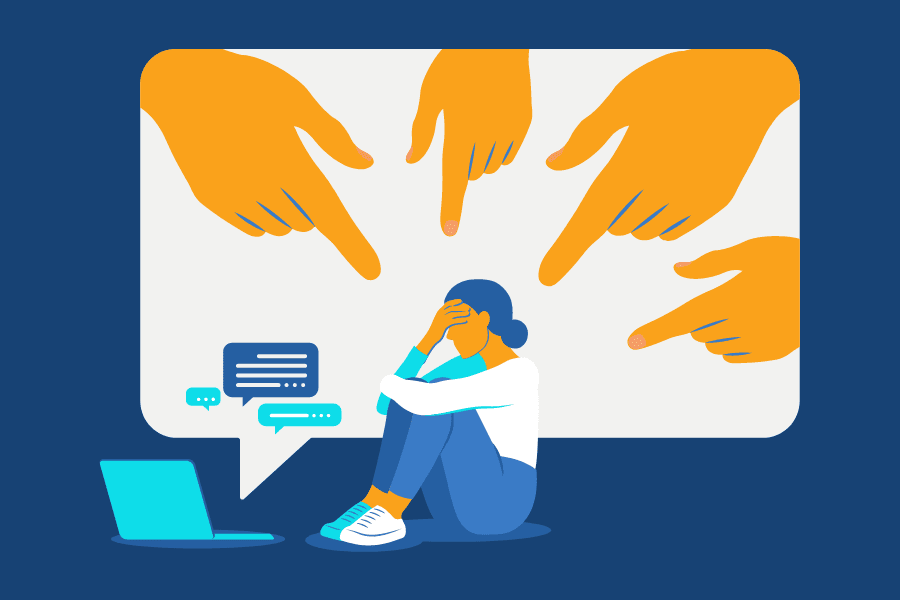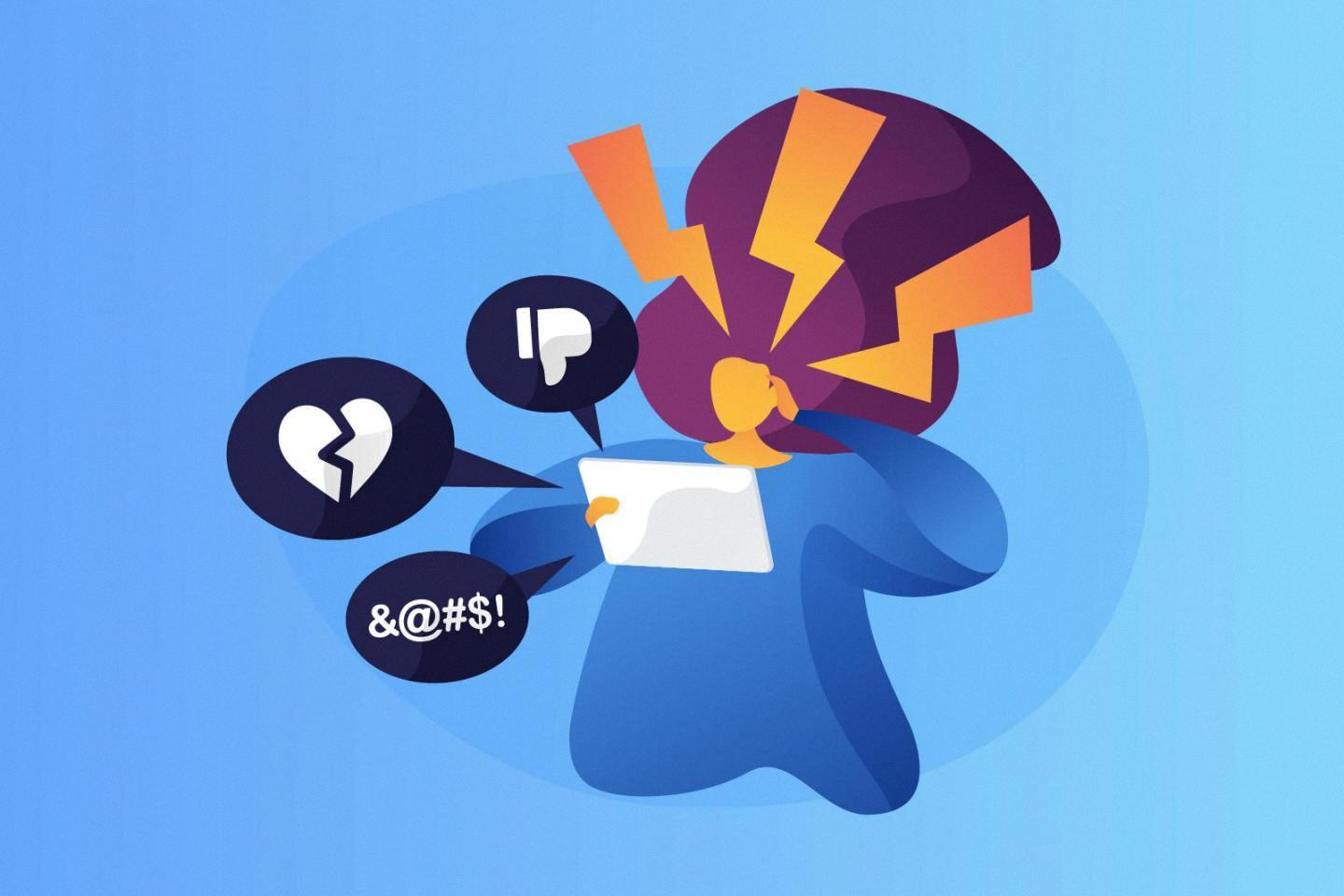As a parent, it’s hard not to worry about your children’s safety in the digital age. Cyberbullying is a growing problem, and statistics show that it’s becoming increasingly prevalent.
According to our research, 21 percent of children between the ages of 10 and 18 have been cyberbullied. The countries with the highest rates are India at 38%, Brazil at 29%, and the United States at 26%. In addition, cyberbullying victimization has increased from 3.8% to 6.4% among female respondents and 1.9% to 5.6% among male respondents over three years.
The impact of cyberbullying is far-reaching; 33% of females and 16.6% of males had depressive symptoms in their young adulthood due to being cyberbullied. Furthermore, it increases suicidal thoughts by 14.5 percent and suicide attempts by 8.7 percent; victims of cyberbullying are more than twice as likely to self-harm or enact suicidal behavior than those who have not been victimized in this way. Overall, teen suicide rates have increased within the past decade – a worrying trend that we must work together to reverse.
It is clear that stopping cyberbullying is essential for protecting the mental health of our children and young people today – but how can we do this? Firstly, it’s important for parents to be aware of what their children are doing online so they can spot any signs of distress or bullying immediately – as well as teaching children about responsible internet use from an early age so they know how to stay safe online themselves when faced with these kinds of situations. Schools also play an important role in tackling cyberbullying by implementing anti-cyberbullying policies and campaigns – as well as providing students with access to helplines or other sources of support if they need it.
At the end of the day, we must come together as a society if we want to tackle cyberbullying effectively; only then will we begin to see tangible change in these statistics – for the betterment of our children’s mental health now, and for generations yet to come!

The Number of Cyberbullying Cases
The exact number of cases of cyberbullying is difficult to determine, as many instances go unreported. However, according to our research, 21 percent of children between the ages of 10 and 18 have experienced cyberbullying at some point in their lives. This means that out of 100 children, approximately 21 have been victims of cyberbullying. While this is a troubling statistic, it also highlights the importance of being aware of the dangers posed by online interactions and taking steps to address this growing issue.
The Countries With The Highest Rates Of Cyberbullying
According to a 2020 survey of global parents, the countries with the highest rate of cyberbullying are India (38%), Brazil (29%), and the United States (26%). India has the highest rate of cyberbullying with almost 4 in 10 parents reporting their children have experienced or witnessed it. Brazil follows closely behind, with nearly 3 in 10 parents reporting their children have been affected by cyberbullying. In the US, more than a quarter of parents report that their children have experienced or witnessed cyberbullying. These numbers indicate a growing trend of cyberbullying globally and an alarming need for preventative measures to be taken.
Impact of Cyberbullying on Mental Health
Based on the data provided, approximately 2.2 million young people in the US have experienced mental health issues due to cyberbullying. This is based on the fact that 6.4% of female respondents and 5.6% of male respondents reported experiencing cyberbullying victimization over three years, with 33% of females and 16.6% of males having depressive symptoms in their young adulthood. These figures suggest that out of a population of approximately 66 million youth aged 12-25 in the US, approximately 2.2 million are suffering from mental health issues as a result of cyberbullying.
The Percentage of Suicidal Deaths Attributed to Cyberbullying
According to the Centers for Disease Control and Prevention, approximately 7 percent of all suicides among people aged 10-24 in the United States are directly attributed to cyberbullying. However, this number does not take into account the indirect effects of cyberbullying such as depression, anxiety, and low self-esteem which can also lead to suicide. Additionally, research suggests that victims of cyberbullying are more likely to become suicidal than those who are not exposed to it.
The Effects of Cyberbullying
The best example of cyberbullying is when someone creates a fake account or pretends to be someone else in order to spread hurtful messages and false information about an individual online. This type of cyberbullying can be particularly damaging as it can be difficult for the victim to track down the perpetrator, leaving them feeling helpless and vulnerable. Furthermore, this type of cyberbullying has the potential to reach a large audience, making it easier for malicious content to quickly spread across the internet.
The Impact of Cyberbullying on People with Depression
It is difficult to determine the exact number of people who are depressed and also experience cyberbullying, as data on cyberbullying is often incomplete or unreliable. However, according to the National Bullying Prevention Center, 37% of kids associate depression with online bullying. Additionally, 25% of children feel that engaging in self-harm is a result of cyberbullying and 26% feel that cyberbullying causes suicidal thoughts. These statistics indicate that a significant portion of depressed individuals experiences cyberbullying.
It is important to note that not all cases of depression are caused by cyberbullying. Some people may have underlying mental health issues such as anxiety or depression that can be exacerbated by the experience of cyberbullying. Therefore, it is important to seek professional help if you or someone you know is struggling with depression or other mental health issues related to bullying.
Lowest Rate of Cyberbullying by Country
Greece has the lowest rate of cyberbullying among adolescents. According to a study conducted by the European School Survey Project on Alcohol and Other Drugs (ESPAD), only five percent of Greek adolescents reported experiencing cyberbullying in the past 12 months. This is significantly lower than the European average, which stands at 15 percent.
Cyberbullying is an increasingly serious issue amongst young people, as digital spaces can introduce new risks and stress sources into their lives. It is, therefore, encouraging that Greece has achieved such a low rate of cyberbullying, with other countries seeking to emulate their success. In Greece, this is likely due to strong anti-cyberbullying campaigns run by government agencies, as well as strong parental supervision of their children’s online activity.
Identifying the Perpetrator of Cyberbullying
The perpetrator of cyberbullying is a person who uses the Internet and electronic communication tools to harass, threaten, or intimidate another person. This can take many forms, such as sending threatening emails or messages, creating fake profiles to embarrass or spread rumors about the victim, posting embarrassing photos or videos online, spreading hurtful rumors on social media, or even hacking into someone’s computer or phone. Cyberbullying is a form of cybercrime that should not be tken lightly; it can have devastating effects on victims, both emotionally and mentally. It is important for everyone to be aware that cyberbullying is a crime and should be reported when it occurs.

Source: spectrumlabsai.com
The Social Effects of Cyberbullying
The social effects of cyberbullying can be far-reaching. Victims of cyberbullying may experience feelings of isolation and exclusion, as they are often made to feel like they are alone in their struggles. This can lead to a sense of disconnection from peers and family members as victims may become increasingly withdrawn and less likely to engage in social activities. Cyberbullying can also cause victims to lose trust in their peers and authority figures, making it difficult for them to form meaningful relationships with those around them. In addition, victims may feel ashamed and embarrassed about their experiences, making it more difficult for them to seek help or reach out for support. Finally, cyberbullying can have lasting impacts on an individual’s overall self-esteem and confidence levels, as the constant bombardment of negative messages can take a toll on their mental health.
The Social Impact of Cyberbullying
The social impact of cyberbullying is profound and long-lasting. It can have a devastating effect on the mental and emotional well-being of victims, leading to depression, anxiety, low self-esteem, and even suicidal ideation in extreme cases. Victims of cyberbullying may also become socially isolated, withdrawing from friends and family as they try to cope with the relentless harassment they are receiving online. This can lead to a decrease in academic performance and even an increased desire to drop out of school altogether. Cyberbullying can also have far-reaching consequences for those who witness it; studies have found that children who witness cyberbullying are more likely to engage in bullying behavior themselves or become more accepting of it. Finally, cyberbullying has become a major concern for parents as well; many parents feel overwhelmed by the potential dangers their children face online and lack the resources or knowledge required to protect them from becoming victims of cyberbullying.
The Link Between Cyberbullying and Depression
Cyberbullying is a leading cause of depression in young people. Research conducted by the American Academy of Pediatrics found that those who had been victims of cyberbullying were more likely to report feeling depressed and sad, have lower self-esteem, and feel less comfortable in school than those who had not been cyberbullied. In addition, research indicates that victims of cyberbullying are more likely to be suicidal than those who have not been victimized. This is especially true for younger adolescents and teens. Cyberbullying can also lead to feelings of isolation, as victims may be reluctant to communicate with others or take part in activities they once enjoyed due to fear or shame associated with cyberbullying. It is important for parents and educators to be aware of the signs of cyberbullying and work with children who are experiencing depression or other mental health challenges due to their experiences with cyberbullying.

Source: unicef.org
The Factors of Cyberbullying
The factor of cyberbullying is a combination of both traditional bullying and a high sense of self-esteem. Cyberbullies often have a high perception of themselves and feel that their relationships with their peers are satisfying. At the same time, they can be motivated by feelings of loneliness or an unsafe environment at school. Traditional bullying involves physical or verbal abuse while cyberbullying is more subtle and typically involves sending malicious messages to another person online or through social media. It can also involve using manipulative tactics such as spreading lies about someone or posting embarrassing photos or videos without their consent.
Conclusion
In conclusion, cyberbullying is a serious issue that affects many children and young adults worldwide. The prevalence of cyberbullying victimization has increased over the past few years, with 33% of females and 16.6% of males having depressive symptoms in their young adulthood as a result. Furthermore, it is estimated that those who are victims of cyberbullying are more than twice as likely to self-harm and enact suicidal behavior, leading to an increase in teen suicide rates. It is important for parents, educators, and society at large to be aware of the potential consequences of cyberbullying and take steps to prevent it from happening.








